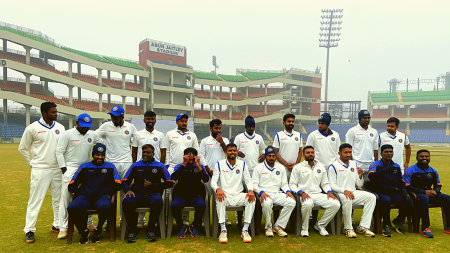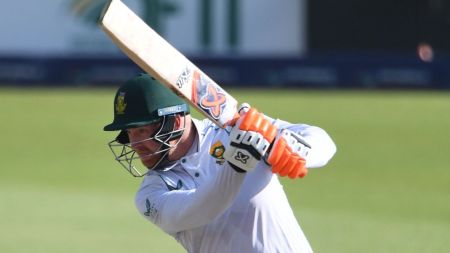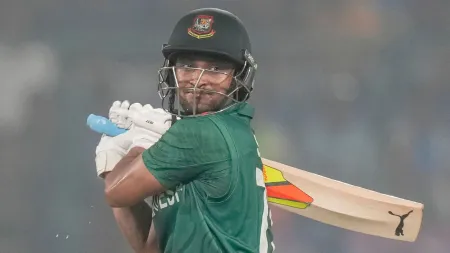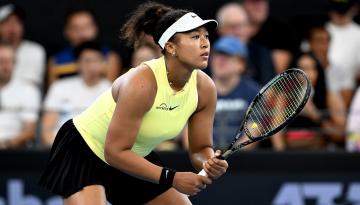T20 World Cup: The problem with Rohit Sharma and Virat Kohli featuring in India’s T20 team
With six months to go for the next T20 World Cup, India are showing signs of drifting away from their T20 blueprint, in place for the past 14 months, by bringing in Rohit Sharma and Virat Kohli back into the fold.
With their presence, two of the three in India’s top-order — which was identified as a problematic area — are back in the XI. Word around is that injuries to Ruturaj Gaikwad and Suryakumar Yadav opened up spots for the return of Rohit and Kohli, who as reported by this newspaper wanted to get back into the T20 fold. But with Yashasvi Jaiswal and Shubman Gill already in the XI, including Shreyas Iyer as an option at No 3 and grooming Sai Sudharsan would have only made them stick to the plan.

In successive T20 World Cups, India’s hard learned lesson was that their top three were too slow. They had experienced it first hand during the 2021 edition, but still repeated in 2022. They course corrected since, identifying what they lacked at the top and searching for batsmen who could provide the impetus for the middle-order. Their old-school way of top-order laying the platform was too outdated. In the T20Is in New Zealand after the T20 World Cup, in a first clear change of intent, they opened with Rishabh Pant. And since then between Gill, Ishan Kishan, Gaikwad, Jaiswal, India had been showing refreshing signs of moving forward.
But here they are, going back to two players, who have limitations in T20s.
Between the two, Kohli has been prolific in the IPL and has only had three seasons where he hasn’t touched 400-run mark. But when it comes to strike-rate, this is how he has scored in the last four seasons: 121.35, 119.46, 115.99 and 139.82. The last one, which is the latest, is encouraging, but there is still plenty of doubts as to how he would go about in the middle-overs (between 7-16), a period where spinners will be at play.
Over the years, opposition captains have used the tweakers to slow down Kohli, and his strike-rate of 116.27 during that phase isn’t going to worry the opposition. It is with keeping his strike-rate against spinners (123.16, all seasons) that his franchise now sees him more suited to open the innings. With Gill and Jaiswal around, India cannot afford to do it.
For a batsman of his class and pedigree, Rohit hasn’t had a 400-run season in IPL since 2013. Since the pandemic, he has tallied 332, 381, 268, 332 in the four seasons with his strike-rate in the last edition of 132.80 being his highest. Such numbers don’t instil fear in opposition ranks. And beyond the powerplay, in the middle-overs (overs 7-16), a period where most settled openers up the ante, his strike-rate is only 121.89. And against spinners it comes down to 113.36. The understandable expectation is that he would carry his attacking form in the ODI World Cup into the T20s, but it remains to be seen as the pressures of the format are different.
With them all but certain to lock their spot for the T20 World Cup, India should also factor in what they will be missing. If Gill is preferred over Jaiswal to partner Rohit, it isn’t exactly an upgrade from what India have had in the last T20 World Cups. And they will also miss out on having a left-right combo at the top.
And when Hardik Pandya and Suryakumar make a return, and one of the wicketkeeping slots is taken by Jitesh Sharma or Sanju Samson, there is only one other spot in the XI with Rinku Singh, Tilak Varma, Ishan Kishan and Shreyas Iyer in contention. After injecting the team with five left-handed batsmen in the recent series against Australia as it provides them with edge in T20s, to take the field with just one of them would be putting their own module that is working successfully to the bin.
According to those in the know, word is that given Pandya’s fitness struggles, there are concerns whether he would be able to lead the team at the T20 World Cup. That the tournament is held just days after the IPL finishes is only adding to the concern because with Pandya set to play a minimum of 14 matches in the IPL, unless his workload is managed properly, then it could become a headache at the eleventh hour.
With Rohit and Kohli having a high chance of batting together in match situations, with their past limitations, the immediate future is intriguing. The conditions in the Caribbean, where India will play the Super 8 stage of the T20 World Cup, haven’t been on the flatter side and when it comes to match-ups against spinners the franchises that Rohit and Kohli play for have only used other resources.
So to overcome these short-comings, the duo have the three matches against Afghanistan and possibly the first half of the IPL (as squads for the T20 World Cup have to be named by then) to show a different side of their T20 batting. It isn’t beyond them, of course, for only a couple of months back they showed their capability in the 50-over World Cup.
The three-match series against Afghanistan – a team filled with ace T20 spinners – beginning Thursday would offer a reality check as to where Rohit and Kohli stand in terms of the shortest format. Whatever it is, this discussion will get only hotter in the summer.
Disclaimer: The copyright of this article belongs to the original author. Reposting this article is solely for the purpose of information dissemination and does not constitute any investment advice. If there is any infringement, please contact us immediately. We will make corrections or deletions as necessary. Thank you.





